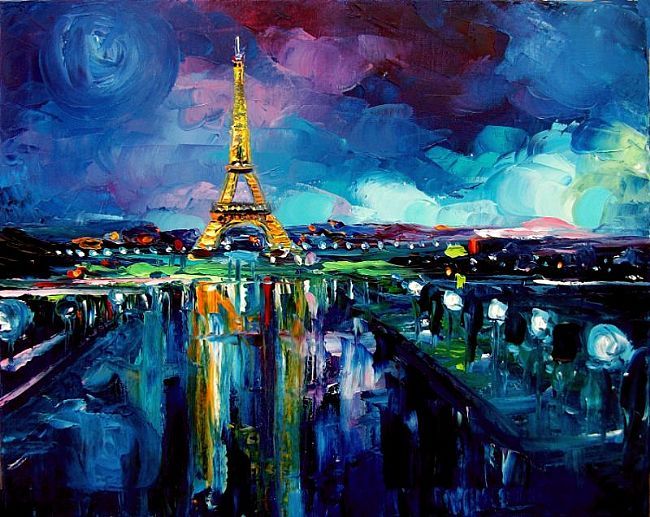Carolina Torres
La Tour Eiffel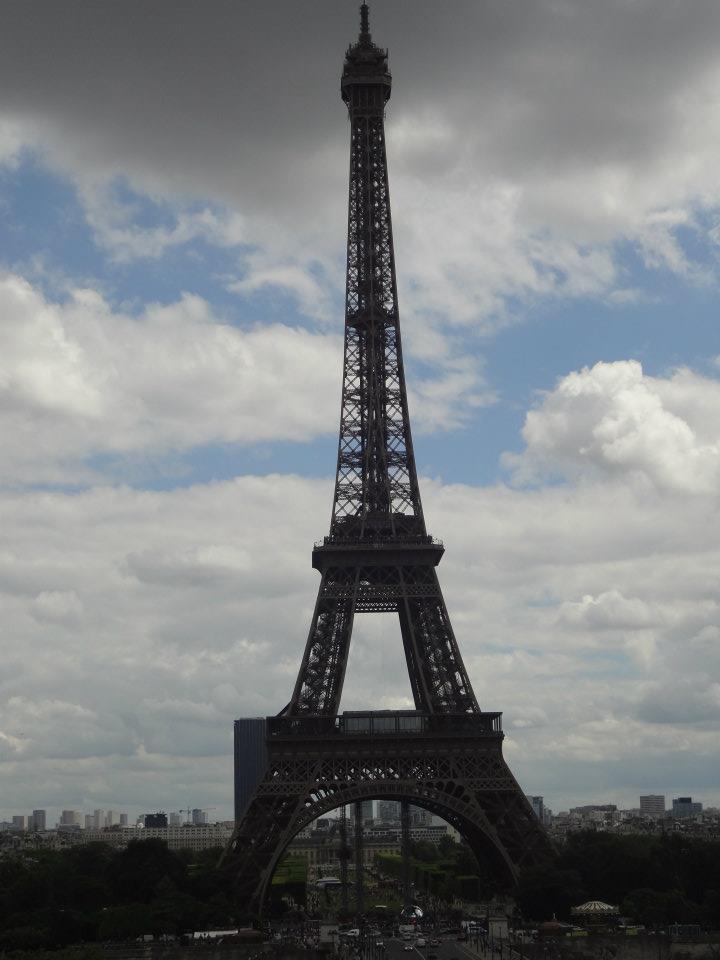 It can’t be denied that when one thinks about Paris, one of the first images to come to mind is the Eiffel Tower. These days, it has become the most important and recognized symbol of this city and perhaps of France. This tower has come a long way from its beginnings, when not all people where happy with it as it looked out of place in the city, being made out of such an unusual material for something that was supposed to be beautiful. Besides, the tower represented ideas that were not yet welcome or supported by the people of Paris, such as the start of the industrial revolution and the separation of France from the monarchy. The Eiffel Tower is in fact a very unusual monument to be seen in paris, with no ornate columns or gargoyles sitting atop its heights, no polished marble or stained glass, but a solid, intricate lattice made out of iron. Even so, in my eyes it made for a very beautiful view to get lost in, its distinctive shape dark against the ever changing Parisian background I saw everyday throughout my stay. It was an unforgettable experience, walking among the varied cultural groups that visited, hearing intertwined voices in several different languages as they excitedly took photographs of the magnificent views that could be admired from atop the tower. I believe that in this day and age, the tower has come to symbolize just that, a place of beauty and diverseness where people of different cultures can come and mingle. This was made even clearer at night, when we returned to the tower and found a variety of groups of different nationalities, each sitting in individual circles admiring the impressive night scene of the tower. As the night progressed, it ended up just being a large group of people all talking and singing and dancing beneath the great structure. These nights shaped my view of the tower as a place to come together with people you would never have met, all with the same intention of coming to Paris and absorbing all the sights, sounds, tastes and smells it has to offer!  Musee de Cluny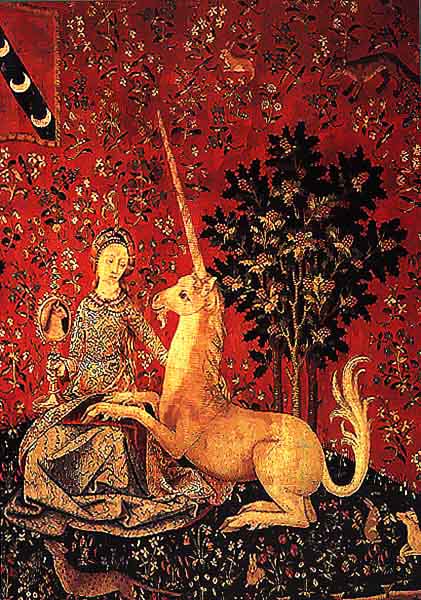 When one enters the Cluny Museum, it is difficult not to notice the strong religious theme that fills it’s display rooms and cases. Most of the artwork features characters of religious origin and various types of relics fill the glass display cases. After walking through it and collecting information, the cause of this is revealed to be that this museum formerly housed the town hall of the abbots of Cluny. This was a very important group during the religious awakening. If we stop to understand that during these times, art was used as a way to get closer to God, and to cherish him, it is easy to see why the religious theme is prevalent. Throughout the museum, one can find various types of art such as stone sculptures and busts of important or religious figures. Many of these include headless statues made out of marble or other types of stone. There are also lots of wood reliefs and triptychs, and relic boxes encased in the museum’s glass cases. Overall it was very interesting to look at, but what was really memorable was the room where “La Dame à la Licorne” tapestries are displayed. These enormous works of art are a collection of 6 tapestries featuring a lady with a unicorn, and symbolize the 5 senses. Each tapestry represents one of the 5 senses, sight, smell, taste, touch and hearing. The sixth tapestry, named “A Mon Seul Desir” is thought to represent a sixth sense, among other theories. After reading the information cards that were throughout the room, my guess is that the meaning of this sixth tapestry is more probably “the ultimate sacrifice.” This last tapestry features the lady receiving a long jewel necklace from an ornate box. The Cluny museum was an experience I will really remember, particularly the tapestry room. Musee du Louvre
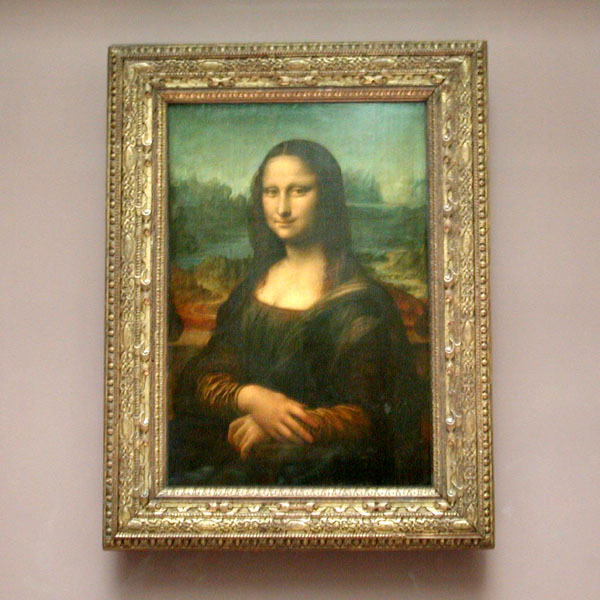 A visit to Paris would have not been complete without a visit to the Musee du Louvre. This epic structure which was formerly a Palace, and formerly to that a fortress, houses one of the most astounding and diverse collections of art I saw during my entire trip to Europe . Its different wings contain different types of art depending on the era and part of the world. I soon realized the Louvre to be immense, and came to the realization that I could not possibly see all it had to offer in just one day, let alone by using my method of admiring art, which can take up to half an hour for a piece I really find interesting. Some of the moment’s I will never forget include when I climbed the first flight of stairs and arrived at the platform where the Victory of Samothrace was being exhibited. I carefully studied it for a very long time and walked all around it, standing on the tips of my toes to get even closer to see the details on the stone, not that I wasn’t already 5 inches close to it. Also, visiting the room where the Mona Lisa was displayed was something I felt lucky to be doing. I slowly made my way though the sea of tourists as they eagerly tried to take pictures and get a better view of this masterpiece by Leonardo Da Vinci. Throughout our visit we also noticed that a very considerable number of statues featured Greek mythology gods. I really enjoyed viewing these sculptures as I am aware of these Greek stories and have read some books on Greek mythology. Calling it mythology sound unfair as these stories are very similar in nature to the biblical stories people read in church today. It is just the religion of the Greeks, and these themes prevail in the art at the Louvre for the same reason other religions prevail in art. People were deeply touched by these stories and felt they should preserve these grandiose characters in their art. In the same way as one does not need to be catholic to appreciate religious art, it is not needed to be knowledgeable of Greek mythology to appreciate it, but it does add to the experience. I also really enjoyed going to the African art room, where there wasn’t that many people, but it was something different than what I had seen during my trip. All in all, it was a very memorable experience that I could write a lot more about, and a place I could certainly see myself re-visiting in the future. Versailles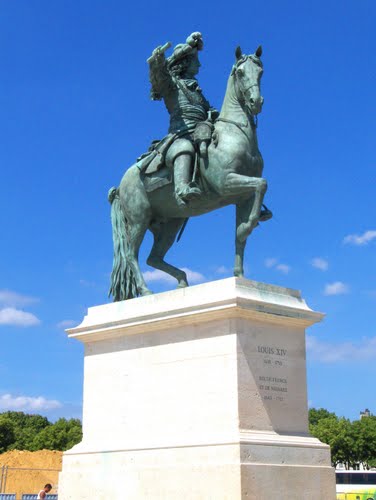 The day trip to Versailles was one of the best experiences I had during the course, and it came at a very good timing. This day I had been rather depressed by personal events, but as soon as I entered its gardens, it was impossible for me to remain in a negative mood as I contemplated all the beauty in my surroundings. The vast space was full of natural beauty with a twist; every plant was cut trimmed to perfection into angled squares and other shapes. Gardens bloomed with flowers of many distinct types of flowers of all sizes and the soft grass was kept in perfect conditions. There was also very breathtaking view of fountains and Greek mythology characters such as Artemis, Hermes and others that decorated the walkways as we explored the area. As we made our way biking through the little forests and wooded parts of the gardens; I was in awe at the immense size and beauty of them. Many times I was about to fall because I just couldn’t stop looking all around me and smiling, thinking how lucky I was to be in such a place. Coming here was the perfect way to ease my mind and just soak in all the splendor of the gardens. The second day we visited, we were able to go into the chateau itself, and I was amazed at all the attention to detail everything had. Every tapestry, every chair, every wall and doorframe was highly ornate and fancy. It was overwhelming to enter the King and Queen’s bedrooms and see the richness of everything lying around. One of the first rooms we entered was the salon of Hercules, which featured a very large ceiling painting about Hercules; it conveyed the power man had to rise above himself, with several different persons and Hercules gleaming down from above. Another notable salon is the Salon of Abundance, which is decorated with various paintings, a ceiling fresco, and highly ornate wallpaper and wall decorations. It is a very Baroque art style indeed, with over the top attention to detail. All in all, this chateau is a ridiculous display of riches and power, it can be said that it was almost a shrine King Louis XIV built for himself. Even nature was highly stylized and distorted, to show that King Louis XIV was the one in control. This is also why the chateau is decorated with such pieces of expensive art, being that the King decided to take control of the arts as well. It was all a big display of his immense power and influence. One curious thing that I noticed was how the King felt there was a need to escape all this annoyingly loud display of riches he himself had created by building the Trianon, a mini chateau built as a retreat from the commotion in the regular chateau. With huge walkways, impressive architecture, its own gardens and fountains, and a huge investment on artwork, the Trianon was a mini chateau in every sense of these words. It seemed that even on his retreats, the King could not manage to live without his impressive riches and luxurious way of life. In my opinion, I enjoyed the gardens a whole lot more than the actual chateau, as I am not very fond of the Baroque style of art and prefer a more organic and natural panorama. Le Pantheon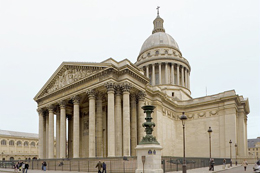 The Pantheon in Paris, formerly the church of Genevieve, serves the purpose of standing as a memento of all those who helped shape France into the independent republic it is today. During the French Revolution, when citizens started to realize their own capacity of power and started to question the authority of those that had oppressed them, the church saw itself under heavy criticism. People began questioning anyone with power as it seemed that they were under the constant oppression from the monarchy and the church’s officials. The purpose of the pantheon is to serve as a present day symbol of everyone that has fallen throughout the year in order for France to have its independence and freedom of religion and ideas. It is to these people what a castle is to a king, or what a church is to a religious figure. Inside the Pantheon, a very special artifact resides. Foucault’s pendulum is on display here, which was the sole proof that the earth rotates in its own axis. This was perhaps the first proof that humanity had of the earth’s rotation, and it seems fitting that it should be here in the Pantheon, as it also represents how the world is moving on it’s own along its course, alluding to the ideals of independence. The Pantheon is a place of high importance, as very iconic people are buried in this location, including Voltaire, Victor Hugo, and Jean-Jaques Rosseau. These people are prime examples of what the Pantheon represents, people with a high drive of independence that helped shape the France of today.La Fête Nationale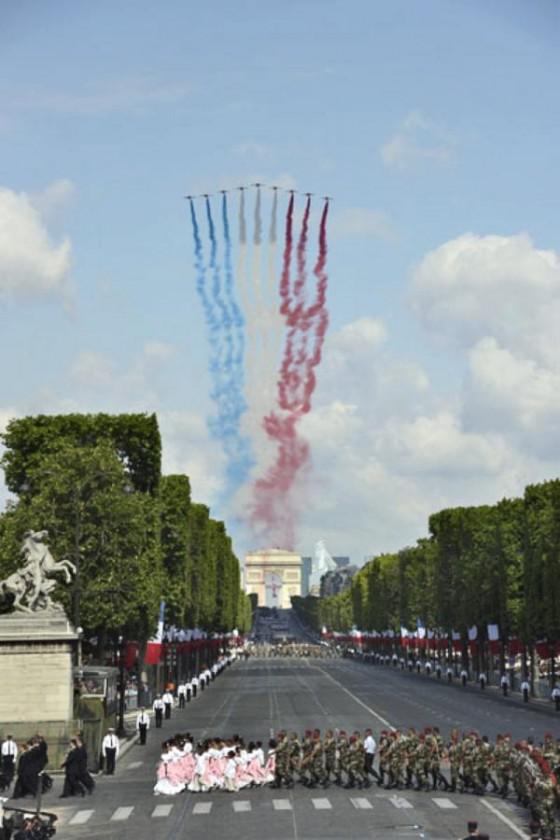 In France, July 14th is a very special date commemorating La Bastille, France’s Independence from the monarchy and the ideals of freedom, democracy, and freedom of religion that the French Revolution brought in 1789. The day started out with a huge parade displaying all sorts of French military forces and military power, showing the different forces marching one behind the other along the streets that were decorated with flags and people gathered to watch. During the night, the focus shifted over to the eiffel tower, where numerous fireworks illuminated the sky, all in celebration of La Fete Nacionale! In addition to this special national holiday, Paris also houses the Arc de Triomphe, which can be seen when walking along the Champs-Elysees. This great monument was erected to commemorate the unknown soldiers that have fallen in all the wars France has gone through in order to gain its independence. I believe monuments like these really bring to attention among the people the fact that they need to be thankful for all those who have gone before them and paved the way for them so that they could be free today, with no need to succumb to the monarchy or be oppressed in any way. Also along the Champs-Elysees, one can see a special holiday that is celebrated in honor of the Earth. I find it disappointing that we could not be there in May to see this celebration, in which this chic avenue is covered with animals, plants and crops to commemorate the Earth, as I have never seen anything like this. I think there should be celebrations such as these in every part of the world, since we are all inhabitants of this same earth, and such a holiday would really bring us all closer as we forget for a day nationalities that bring us apart, as we celebrate the home we all share, our planet. Sacré Cœur/ Montmatre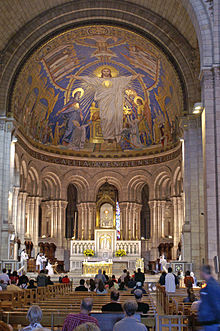 Just getting to the top of Montmatre is an experience on its own, as one climbs seemingly endless flights of stairs, hearing all the street sounds in the surroundings, evading street vendors and probable pickpockets asking personal information. It is a long way to the top, but it is well worth it as the view and the feeling you get is impressive. It is rather odd that a church would be in such a high place, as it seems it is somehow claiming to have some sort of authority or power by being raised above the cityline like that. When first walking into Sacré Cœur, the first thing in sight is the giant, colorful mosaic illustration on the ceiling, which features a giant rendition of Jesus extending his arms, reaching outwards. By looking at it, I got the feeling of being welcome into the church, and it was a good feeling that kept me interested in looking at the sculptures and art inside. Outside the church, one can observe the equestrian statue of Joan of Arc and of Saint Louis , which were placed there because of the strong role in Catholicism they convey. Some would argue to the commercialization of the Church, which is easy to understand, not only from this church but others as well, when one observes how they have become more like a touristic place of visiting and consuming items such as souvenir tokens or purchasing candles inside the church to make ‘prayers.’ This is true in some part, but this is not the only church that has become commercialized, and it at least still keeps its roots, asking tourists to go appropriately dressed and to keep silent in respect to those in prayer.
Musee de Rodin
When walking through the gardens and display rooms at the Rodin Museum , one is able to see a great collection of sculptures by the father of modern sculpture himself, Auguste Rodin. This important sculptor’s work is easily recognized as he had a very peculiar way of leaving his sculptures in the rough, letting his work show his emotion, rather than polishing and leaving every detail perfect. His sculptures convey his very profound emotions and display the human being in a very naturalistic view, with sculptures ranging in topics from busts of important persons to unrecognizable figures seemingly having wild orgies. Rodin was named the father of modern sculpture perhaps because he moved away from the classic idea of sculpting characters of religion, the monarchy and mythologies, such as gods or royals, and instead focused on sculpting man on a more naturalistic way, focusing on movement and emotion above all. Also, as I mentioned above, he moved away from the mega realistic style of sculpting, and embraced his own style of passionate roughness. As compared to more classical works of art, such as those in the Louvre, the sculptures by Rodin really seem to talk to the viewer and immerse him with emotion as one stands in front of “The Prodigal Son,” The Crouching Woman,” or “Fugit Amor.” One of the pieces that is exceptionally true to his style of romanticism is “Les bourgeois de Calais” which features a group of men that have been sentenced to their death. Upon appreciating this work, one can feel the genuine human emotion each of these characters evoques. One can feel their suffering and despair, expressed differently by each one, with one even giving the impression of having accepted death as it comes to him. Another notable piece by Rodin is “The Walking Man,” which really shows off how the artist could master the technique of showing movement in his works. As compared to Giacometti’s more static sculpture with the same name, Rodin’s really shows how movement can be captured with a solid medium. It was also a pleasure to look at the other sculptures such as “The Thinker” which I felt lucky to be able to appreciate.Quai D'Orsay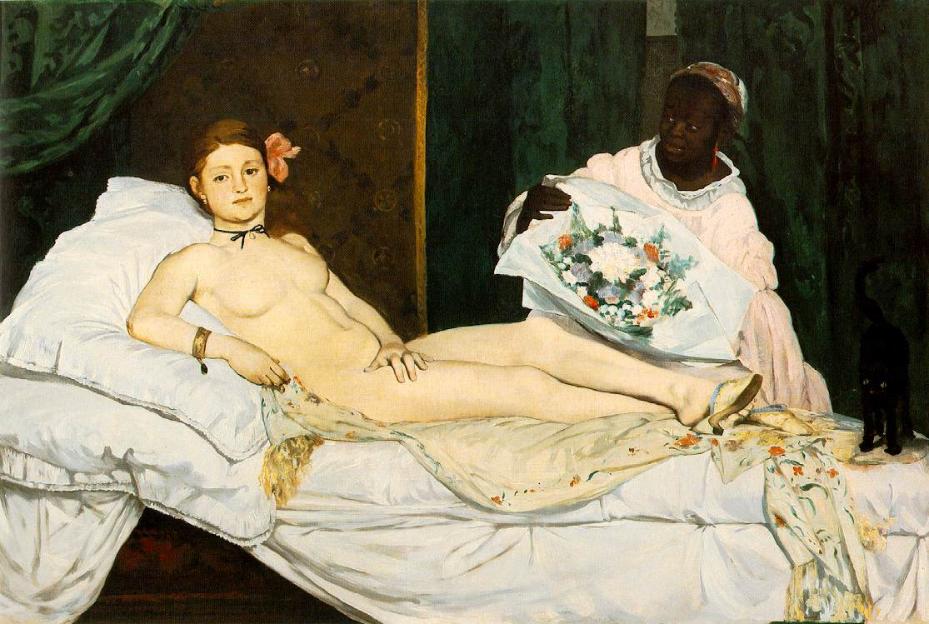 One of my favorite museums that I visited while in Europe was the Quai D’Orsay because of the fact that impressionism is one of my favorite styles of art. Also, this museum houses works by some of my favorite artists such as Van Gogh, Henri Toulouse-Lautrec, Degas, and others, as well as works that I really look up to such as “Olympia.” In the time of their creation, some of these works I admire so much and are famous around the world were considered distasteful and erratic both because they did not follow the classical methods of painting, deviating far from realism, and because they displayed ideologies that the world simply was not ready to grasp. It even came to the point where these magnificent works were being denied the chance of being displayed. One of such works for example was “ Olympia ” which displayed a nude Olympia along with a servant of hers. Another was “Lunch on the Lawn” which displayed members of the bourgeoisie calmly sunbathing with a nude courtesan. Although these paintings maybe displayed truth, they were shunned from museums because they broke social standards and promoted ideologies that were far too free-spirit for the people of their century. Some critics from the 19th century even claimed impressionistic works to be just a ‘fashion’ and not an art, by this they meant something along the lines of ‘this is just a phase, a craze that will die down, and leave classical art standing.’ Two centuries later, we know this was erroneous and that impressionism is one of the most valued styles of art around the globe, with various important impressionist artists being given high importance and influence within the artistic world. This is perhaps because impressionism is not about how close one can paint a certain subject, or how your painting can influence or manipulate a person’s mind with religion or grandeur, but instead is about human emotion and the way you feel about your subject and what you are painting, mundane as it may be. This is the reason why I really value impressionism and why it is one of my favorite styles of art, and the reason why my favorite artist is the impressionist Vincent Van Gogh.
Le Pompideu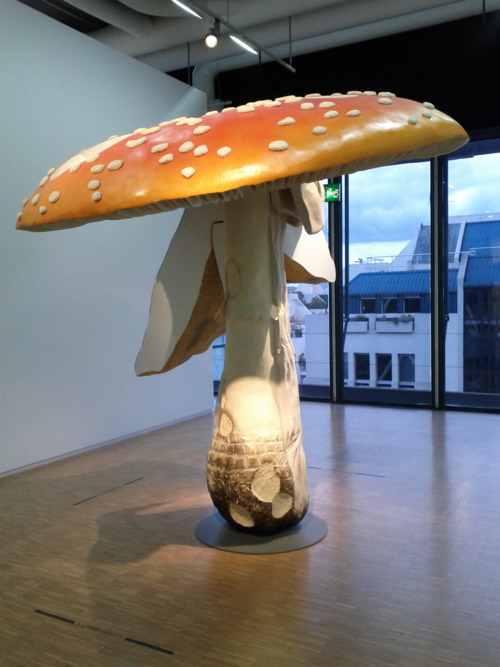 Two other museums that we visited during our stay in Paris was the Museum of Modern Art and The Pompidou Museum, both of which house more modern in style collections. During their time, they were viewed as too risky or even avant-garde, but this same idea is again the same that was thought about impressionism and other styles of art. These new methods of painting or of artistic expression were looked down upon because of their deviation from conventional and classical methods of painting. Simply for not following any current school of art, they were viewed as radical or something unsightly. In its time, impressionism could have been called ‘modern art’ just as well. So in some respect, every style of art could be considered avant-garde as new styles emerge. One of the very interesting collections we were able to see were the paintings by Gerard Richter, who painted with the goal of making his paintings appear as photograph-like as possible. To do this he used various techniques such as grazing his brush back and forth over his finished painting to create a blurred-out effect. While some classical artists might argue that his work is an inferior style of art simply because it deviates from more conventional styles, he did indeed create his own style that can be easily recognized and credited to him. Personally, I really enjoyed his whole collection, housed in the top floor of the Pompidou. It was mind blowing and pretty amazing to see the range that this artist explored and mastered in apparently such short time frame. The pompidou was another one of those museums that I swore I would return to simply because even though I spent such a long time in it, it was impossible for me to see it all. This might have been because I really took my time viewing each piece, and wondering what the artist might have been thinking when they created each. One of my favorite pieces was the triptych mushroom, which I fantasized about stealing and keeping in my room. Musee du Cinema The Museum of French Cinema is very interesting as it encompases both art and technology, and this seems very apropriate as cinema is just that, a mixture of art and the technology needed to put together, record, edit, and play back this very interesting form of art. A good film can indeed show the emotion and ideas of its creator, just as a painting can do something similar for its painter. Taking this into consideration, we can easily say that cinema is indeed an art. French films indeed are a work of art, and very interesting to watch, as they do differ greatly from mass productions that are created in the U.S. I’m sure I’m not alone when I say I would much rather watch a French art film that can convey a meaning and purpose than movies produced in the U.S. for the mere purpose of busting the box office and raking in millions, perhaps with good actors but with badly produced plots. As compared with Mexican films, I would say French films are still superior in my opinion, as Mexican films tend to focus a lot on emotion and sometimes on nationalism, so I think everyone can more readily just sit down and enjoy a French production such as Amelie. It’s been said by Bazin that photography was both a fulfillment and a liberation, and I believe this is because with the start of the technology that could be used to record our world as it is, art no longer had to be all about realism and recording the environment just as it is, since there was now technology available that could do this job much better. Now, an emphasis could be put in how the artist saw the world, how they felt about their subject and the different things they could interpret as they saw a common object. This is why I believe the birth of photography really helped push the traditional arts to their full capacity. Musee du Science Nature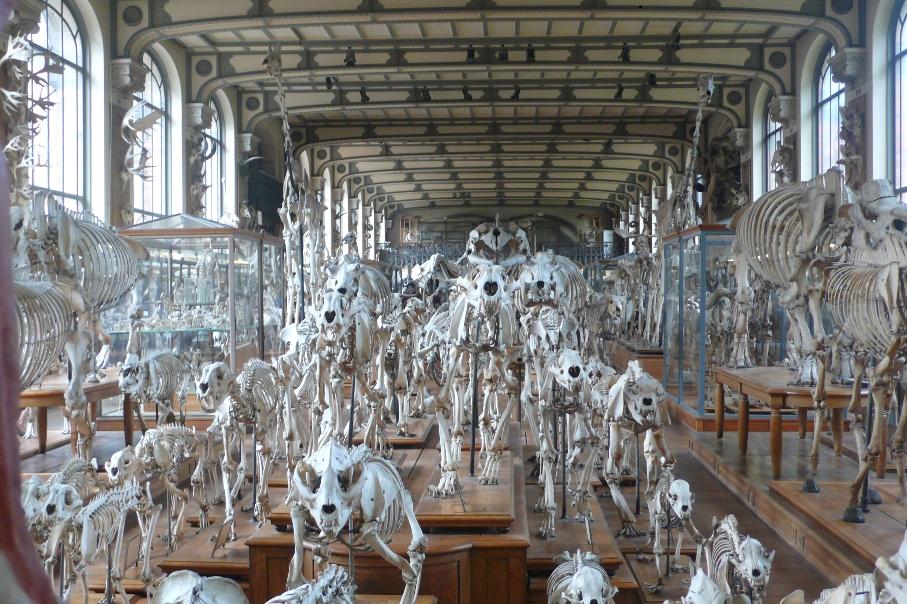
Something that I was not expecting to find in Paris was a museum of natural history. Our trip there was very interesting as I loved seeing all the different animals and humans that were on display. It was funny and also revealing to see human skeletons being displayed along side those of other animals, because at the end, the human being is an animal too. Throughout time, we humans have always tried to outdo other animals and each other in an attempt to prove that we are the superior being. Although this might be true, other animals are surely not very behind us, as it has been proved that they are quite smart, sentient beings. While it might be true that we are privileged to be so advanced in our discovery and mastery of the arts and technologies, among other things, it is also true that it makes us responsible for all our fellow animal species. Our knowledge and ability to control parts of our environment puts us in the spotlight to look for ways to protect our planet earth and species that may not be able to do it by themselves. The least we could do is reduce our wastes and dangerous emissions that can contaminate and put everything else in danger. To be a human means to be able to understand and take initiative of the current state of our planet. It is absurd that many people are oblivious to how much harm our species alone is doing to the earth when we are supposed to be taking care of it and preserving it for future generations. I was shocked to find out that we are currently living up to the capacity of having 1.5 earths. This is very scary considering we only have one planet, and sad considering that we are lucky to be here as not many planets have hospitable conditions, and here we are taking ours for granted. Thinking about this makes me wonder if we really are the ‘superior’ species, as we claim. Overall, this trip really had me thinking about these issues, the importance that conservation really has, and the huge responsibility that befalls upon us as humans. I do believe that it would help if world leaders knew and understood these topics I’ve encountered during my exploring in Europe, but It would do an even greater good if everyone, teachers, clerks, lawyers, our neighbors, would open their eyes and see the effect that we can have in our planet. The collective positive actions of everyone would certainly be a great help, considering our collective negative actions are what have put our earth in its current state. Blois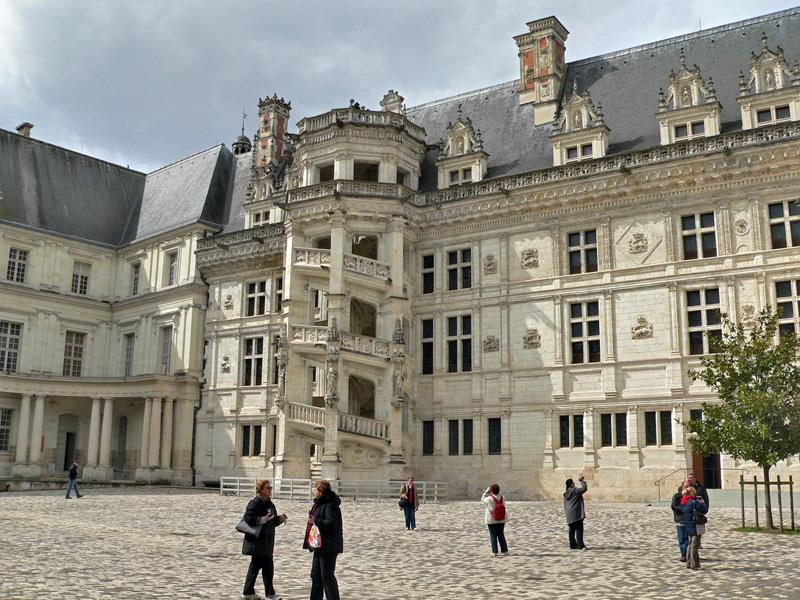 Perhaps our visit to Blois and its surroundings was one of the things I would have never imagined or had in mind I would be doing in my life. Even though it seemed Blois had little to offer for being so small, we quickly found it to be a very pleasant experience full of cultural importance. Here we visited the very first chateau of France! This was an amazing experience and so was coming to the chateau again at night to the “Son et Lumiere” show, which featured a really well-put-together light show that told the story behind it as me and my friends lay on the floor listening in amazement. We also rode a horse-drawn carriage throughout the city, which made me ecstatic and reminded me once again of my luck to be visiting such places and doing such amazing things. After that, we also biked 15 kilometers to reach the Chateau du Chambord that took inspiration from the Royal Chateau du Blois. It was a long journey but it was also one of my favorite parts of the trip, as it was magical to see the chateau come into sight in the distance as I rode the bicycle through the wooded cycling path along the Loire River. It was very cool to follow the Loire for so long, and later for it to be the first river I swam in and skipped rocks in! Visiting this little town was certainly one of the best experiences of our trip, even though at first it seemed it would be a place with little to do, our little group was able to make each day count, learning new things and having way too much fun in the process! 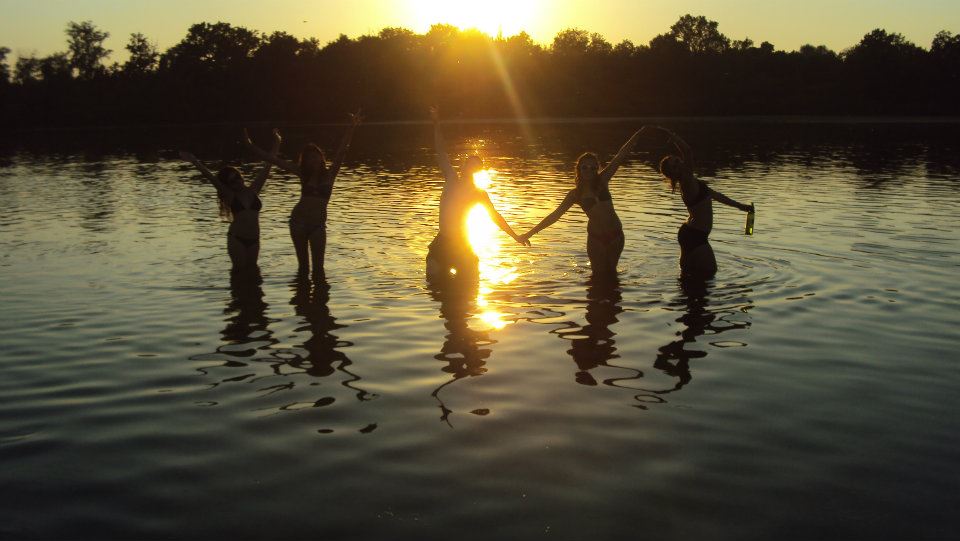 Giverny: Nature, Landscapes, & the Future of the Humanities: Beyond Paris & the MuseumsGetting out of your daily routine really helps you shift your thoughts and your focus on things. As I left everything behind in Brownsville, my job, my family, my friends I am usually always with, my job, and entered this new strange, almost whimsical place, I began to see things with a different light completely. As I learned of the great influential people who have built and shaped our world as we know it to be, I started to reflect on what my role was as a person living on this same world. I believe that we are given a huge opportunity when we are born, one that fleets by if you don’t know how to really live it: see it, smell it, taste, hear and touch it. People are at times overly focused on what their future will be like, that they submit themselves to a great deal of stress and live a linear life that never lets them really live what they are experiencing but rather they look at events in their life as obstacles they have to go through to get to an ultimate goal. It’s always been my opinion that as human beings, with our abilities to appreciate and understand, we should do just that, appreciate all there is in the world and understand that it is possible because thousands before us gave their effort, dedication and sometimes even their life to make it possible. Hand in hand with this ideal of appreciating our world is of course the preservation and advancement towards an improvement. If we all understood just how lucky we are to have a planet suited to house us and make all the advancements and technologies we have possible, it wouldn’t even be an option not to be green. In conclusion, being part of this study abroad program was really an eye-opening experience. It made me feel closer to the important characters whom only read about before, and now there I was standing before their masterpieces and creations. I just couldn’t stop thinking to myself in amazement how lucky I was to be there, and squirmed at the possibility of I’d never have had the chance or drive to go. It was a mind-blowing experience that I sincerely wish everyone was able to live, as that is just what the world is about, thousands of little gemstones scattred throughout our planet, left behind as a gift to humanity by the great humans who lived in the past. |
||||
